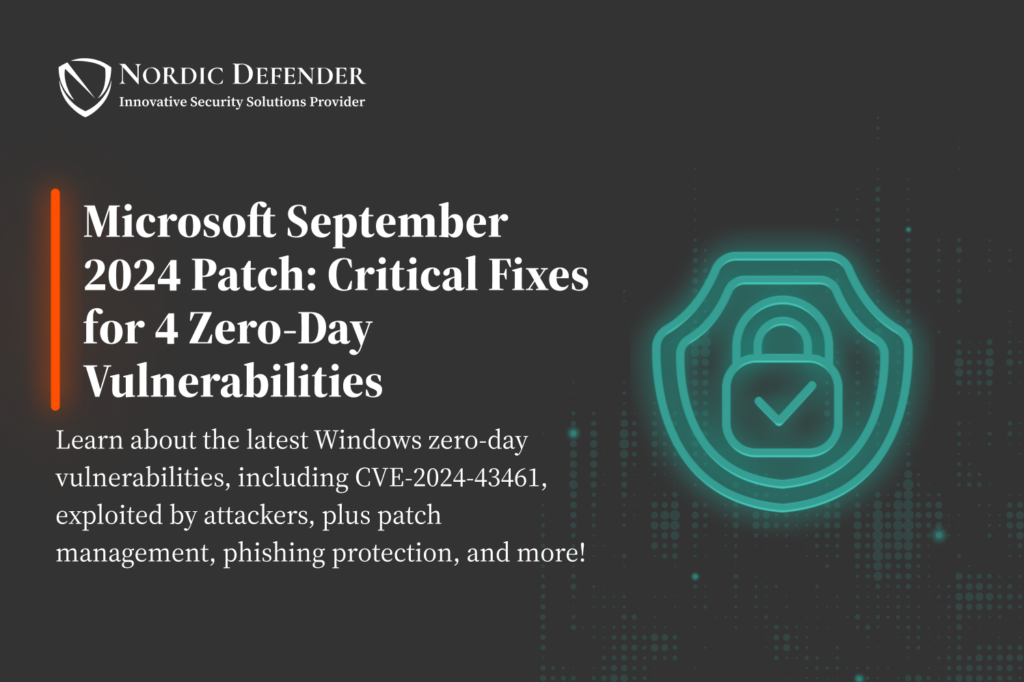In recent cybersecurity news, Microsoft has patched several zero-day vulnerabilities that have been actively exploited by threat actors. These vulnerabilities, especially CVE-2024-43461 and CVE-2024-38217, underscore a persistent and evolving threat landscape that organizations and individual users alike must stay ahead of. To protect sensitive data, businesses need to understand the potential risks and how best to respond.
The CVE-2024-43461 Vulnerability: A Gateway for Attackers
CVE-2024-43461 targets MSHTML, a core Windows component used by Internet Explorer and other Microsoft tools for rendering web content. This vulnerability has been actively exploited by a threat group known as Void Banshee, which used social engineering techniques to trick users into opening malicious files. These files, often disguised as harmless PDFs, contained malware that allowed attackers to steal sensitive information.
What makes this vulnerability particularly dangerous is the way it exploits a common file type (PDFs) to hide malicious extensions (such as .hta files). This tactic relies heavily on user error and a lack of vigilance, which highlights the importance of user awareness in cybersecurity.
For businesses, the takeaway is clear: even seemingly benign files can be weaponized, and all employees need to be trained to recognize suspicious behavior in their files and attachments. Deploying strong anti-phishing measures and endpoint protection is essential to guard against such exploits.
CVE-2024-38217 and Bypassing the Mark of the Web (MotW)
Another vulnerability that has garnered attention is CVE-2024-38217, which bypasses the Mark of the Web (MotW) security feature. MotW is critical in Windows systems as it helps distinguish trusted files from those downloaded from the internet. When MotW is bypassed, files that should be flagged as suspicious can be executed without warning, allowing malicious code to run unchecked.
This vulnerability has been particularly problematic in targeted attacks, where cybercriminals use it to deliver malware or ransomware. Because MotW normally prompts users before executing files from untrusted locations, the bypass significantly lowers the barrier for attackers.
Organizations must ensure they’re applying the latest patches and updates to mitigate this vulnerability. However, patching alone may not be enough. Adopting a multi-layered security approach that includes email filtering, endpoint detection, and regular user training can help minimize the risk.
Lessons for Cybersecurity: Strengthening Defenses
These zero-day vulnerabilities emphasize the need for a proactive, comprehensive cybersecurity strategy. Relying solely on patching and reactive measures is no longer sufficient in today’s threat landscape. Here are several steps businesses should consider:
- Implement a Robust Patch Management Policy
Regular updates are critical to defending against zero-day attacks. Ensure your systems are up to date, and automate patching processes to minimize exposure. - Enhance Phishing Protection
Social engineering remains a key vector for these attacks. Invest in email filtering solutions and educate employees on how to recognize phishing attempts. - Utilize Endpoint Detection and Response (EDR) Tools
EDR tools provide real-time visibility into potential threats and can help detect malicious behavior before it causes damage. - Adopt a Zero-Trust Architecture
Restrict access to sensitive systems and data. Implement multi-factor authentication (MFA) and strict identity management protocols to limit the damage if a breach occurs. - Strengthen Backup and Recovery Solutions
In the event of a successful attack, having reliable backups ensures you can quickly recover without paying a ransom or suffering extended downtime.
Conclusion: A Call to Action for Businesses
As threat actors continue to exploit vulnerabilities like CVE-2024-43461 and CVE-2024-38217, businesses must take proactive measures to secure their systems. While Microsoft’s patches address these immediate risks, organizations need to look beyond simple updates and invest in a comprehensive cybersecurity strategy that includes education, detection, and strong recovery plans.
At Nordic Defender, we specialize in helping businesses navigate the complexities of modern cyber threats. Our expertise in cybersecurity solutions ensures that you stay one step ahead of attackers and can respond to emerging vulnerabilities with confidence. Protect your organization today with our tailored services, and safeguard your most valuable assets from evolving threats.
